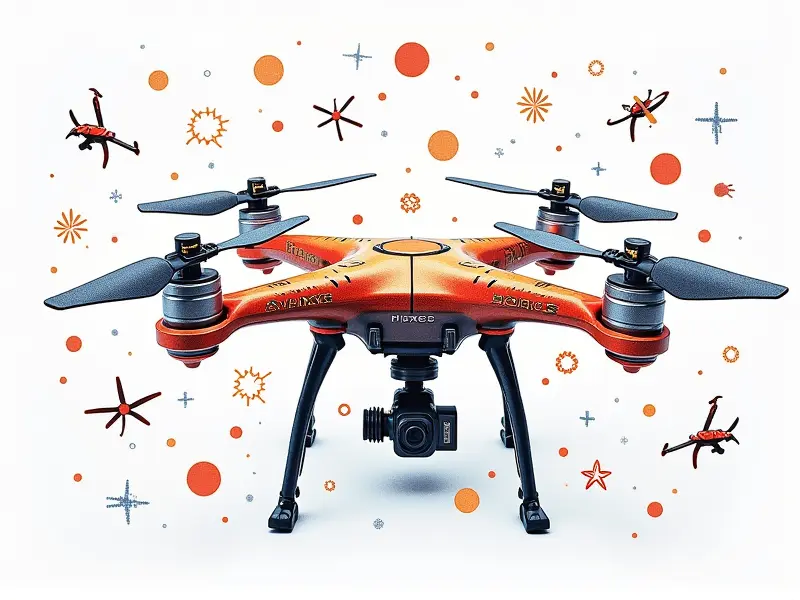RC airplanes in the military?

RC Airplanes in the Military: A Comprehensive Guide
The use of radio-controlled (RC) aircraft in military operations has revolutionized modern warfare. From training exercises to reconnaissance missions, RC planes have become indispensable tools for enhancing military capabilities. This article delves into various applications and advancements of RC airplanes within the armed forces.
How RC Airplanes Are Used in Military Training
Military training often involves simulating real-world combat scenarios to prepare soldiers for actual engagements. RC planes play a crucial role in this process by providing realistic aerial simulations without risking human lives or expensive aircraft. These unmanned vehicles can mimic enemy tactics, allowing trainees to develop strategic thinking and response skills.
Benefits of Using RC Planes for Training
- Cost-Effective: RC planes are significantly cheaper than full-scale military aircraft, making them ideal for frequent training exercises.
- Safety: Trainees can practice in a controlled environment without the risks associated with manned flights.
- Flexibility: RC planes can be easily modified to simulate different types of enemy aircraft or drones, enhancing adaptability during training sessions.
RC Aircraft in Military Reconnaissance Operations
Military reconnaissance is critical for gathering intelligence and assessing threats. RC airplanes equipped with advanced sensors and cameras provide real-time data on enemy positions, movements, and infrastructure. This information helps commanders make informed decisions regarding troop deployment and strategic planning.
Types of Sensors Used in Reconnaissance RC Planes
- Thermal Imaging Cameras: Detect heat signatures to identify personnel and vehicles even at night or through foliage.
- Multispectral Scanners: Capture detailed images across various wavelengths, revealing hidden structures or camouflaged targets.
Stealth Capabilities of Military RC Planes
The development of stealth technology has been a game-changer in military aviation. RC planes designed with stealth features can evade radar detection and penetrate enemy airspace undetected. This capability is particularly valuable for conducting covert operations or gathering intelligence without alerting adversaries.
Key Features of Stealth RC Planes
- Radar Absorbent Materials (RAM): Reduce the plane's radar signature to near invisibility.
- Aerodynamic Design: Minimize acoustic and infrared signatures, making it harder for enemies to detect their presence.
Simulating Combat Scenarios with RC Airplanes
Military exercises often require the simulation of complex combat scenarios. RC planes are used to replicate enemy aircraft or drones, allowing trainees to practice defensive maneuvers and countermeasures in a controlled setting. This prepares them for real-world engagements where they must react quickly and effectively.
Advantages of Combat Scenario Simulations
- Realistic Training: Provides hands-on experience with various combat situations, enhancing readiness levels.
- Scenario Flexibility: Easily modify scenarios to include different types of threats or environmental conditions.
RC Planes for Military Target Practice
Military target practice is essential for honing shooting skills and improving accuracy. RC planes serve as mobile targets, simulating the movement patterns of enemy aircraft or drones. This training helps soldiers develop precision and reflexes necessary for engaging moving targets in combat.
Types of Targets Used in Target Practice
- Moving Targets: Simulate real-world scenarios where enemies are constantly on the move, requiring quick reactions from shooters.
- Fixed Targets: Provide a baseline for measuring accuracy and consistency under controlled conditions.
Surveillance Missions Using RC Airplanes
Military surveillance relies heavily on aerial reconnaissance to monitor enemy activities, patrol borders, or conduct search-and-rescue operations. RC planes equipped with high-resolution cameras and communication systems can cover large areas efficiently while transmitting live video feeds back to command centers.
Advantages of Surveillance Missions
- Wide Coverage: Capable of surveying vast territories quickly, providing comprehensive situational awareness.
- Real-Time Data: Instantaneous transmission of critical information to decision-makers for timely action.
RC Aircraft in Military Logistics and Supply Drops
Military logistics involve the efficient movement and maintenance of personnel, equipment, and supplies. RC planes can be used to deliver essential items such as medical kits, ammunition, or food rations to remote locations where traditional delivery methods may not be feasible.
Benefits of Using RC Planes for Supply Drops
- Rapid Deployment: Quickly transport supplies to areas cut off by terrain or enemy forces.
- Cost-Effective: Reduce the need for large-scale airlift operations, saving resources and manpower.
Training Drones: The Future of Military RC Planes
The future of military training lies in advanced drone technology. Next-generation drones will feature enhanced AI capabilities, improved endurance, and greater maneuverability. These advancements promise to make training more realistic and effective, preparing soldiers for the challenges of modern warfare.
Emerging Technologies in Military Drones
- Artificial Intelligence (AI): Enable autonomous decision-making processes, allowing drones to operate independently under complex conditions.
- Battery Technology: Develop longer-lasting batteries that extend flight times and operational ranges.
Precision Strikes Enabled by RC Military Craft
Military strikes require pinpoint accuracy to minimize collateral damage while neutralizing threats. RC planes equipped with precision-guided munitions can deliver targeted attacks on enemy positions, reducing the risk of civilian casualties and preserving military assets.
Advantages of Precision Strikes
- Reduced Casualties: Minimize harm to non-combatants by focusing strikes on specific targets.
- Economic Efficiency: Conserve resources and reduce financial burdens associated with large-scale military engagements.
RC Aircraft Technology Enhancing Military Operations
The integration of RC aircraft technology continues to enhance various aspects of military operations. From intelligence gathering to combat support, these unmanned vehicles offer unparalleled flexibility and versatility. As technological advancements continue, the role of RC planes in modern warfare will only grow more significant.
Future Prospects for Military RC Planes
- Networked Operations: Develop systems that allow multiple drones to work together seamlessly, sharing data and coordinating actions.
- Swarm Technology: Enable large numbers of small drones to operate as a cohesive unit, overwhelming enemy defenses through sheer force of numbers.

